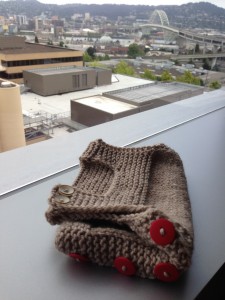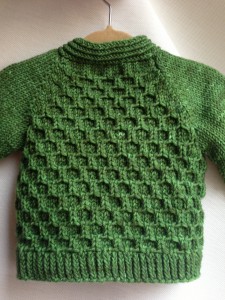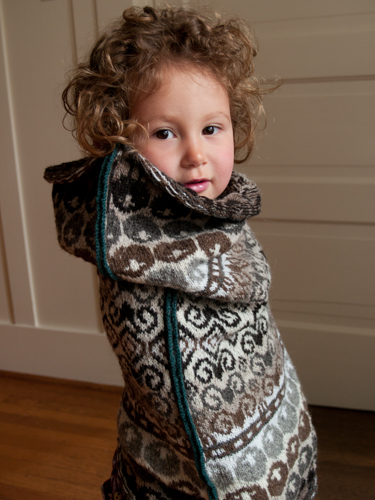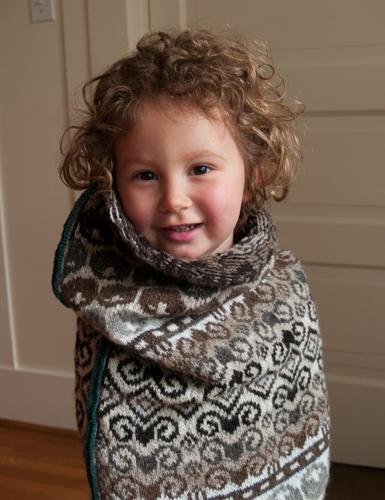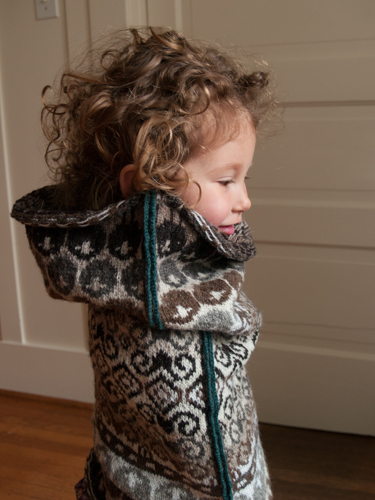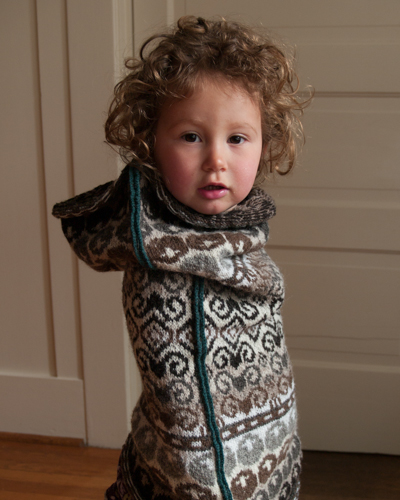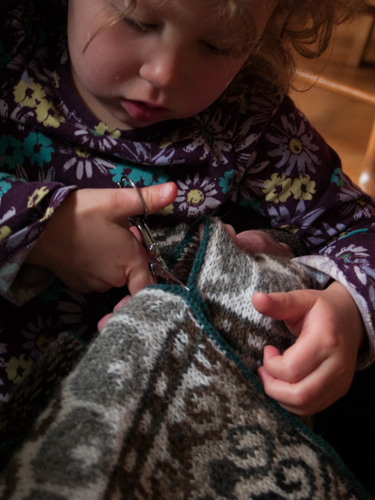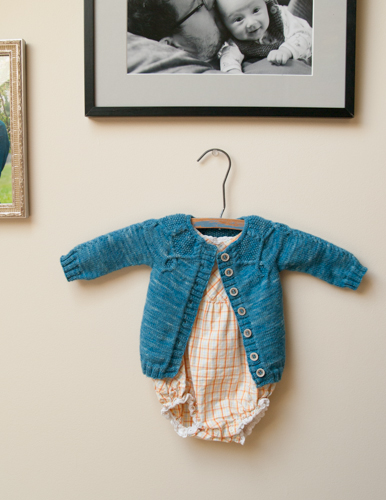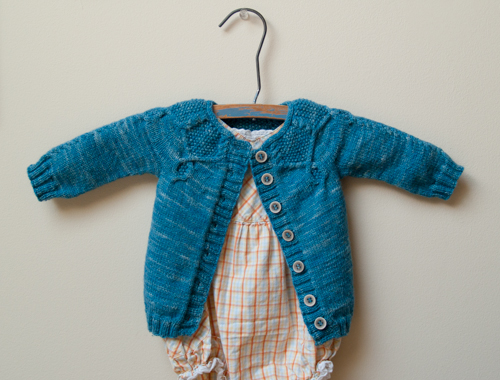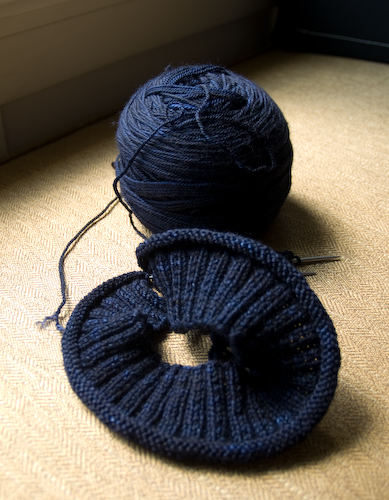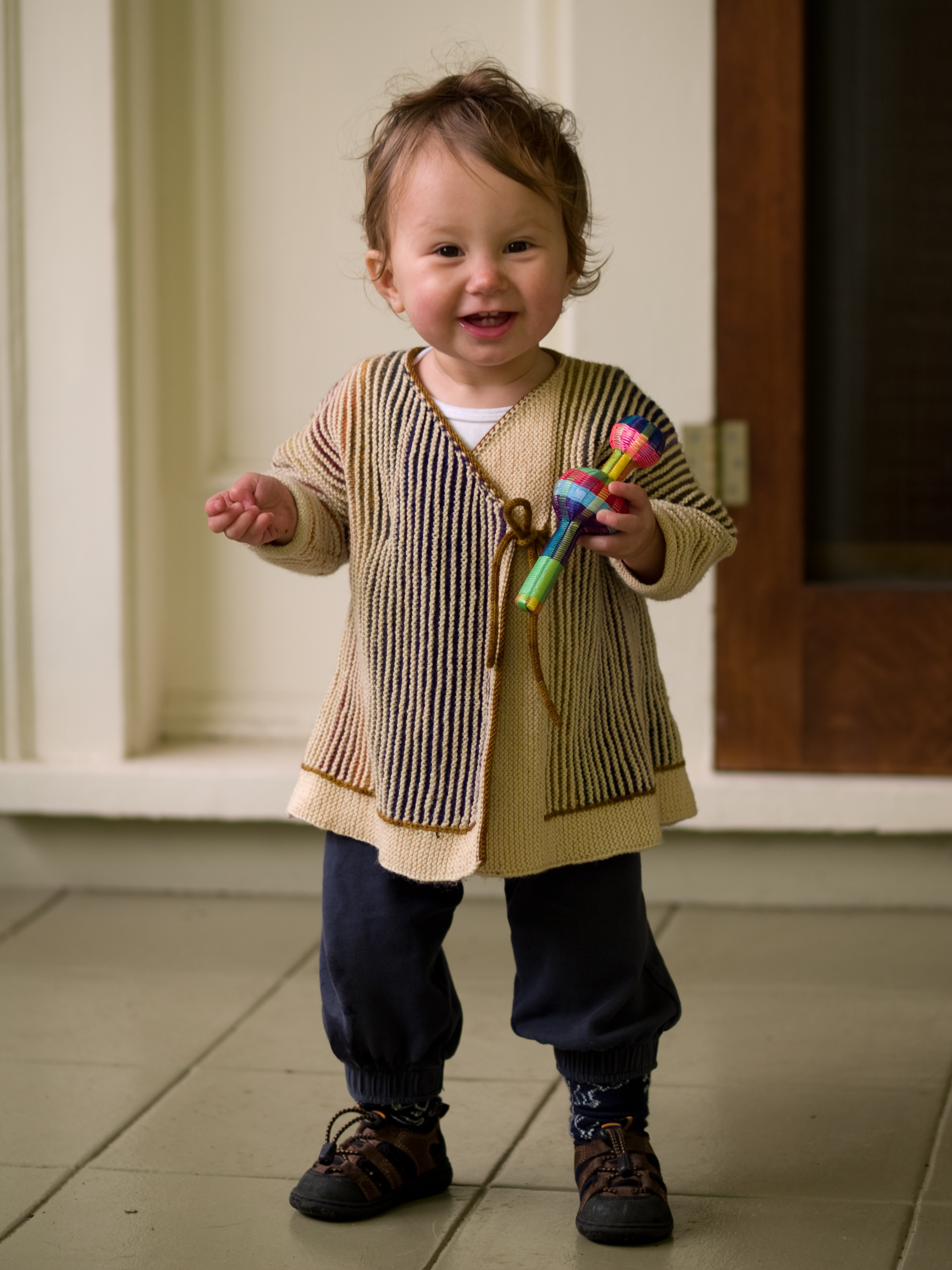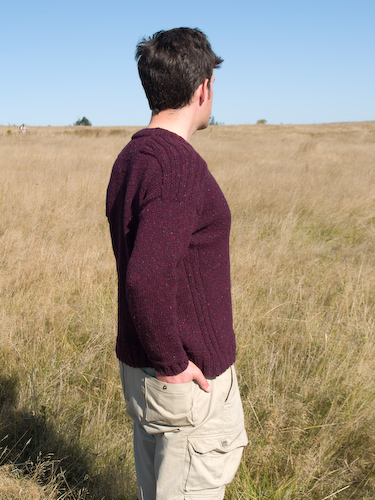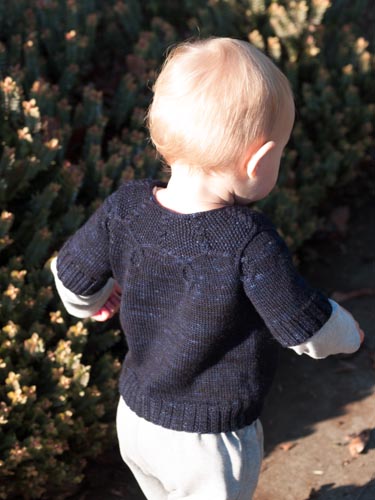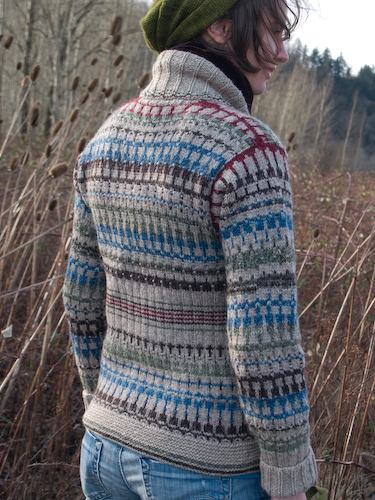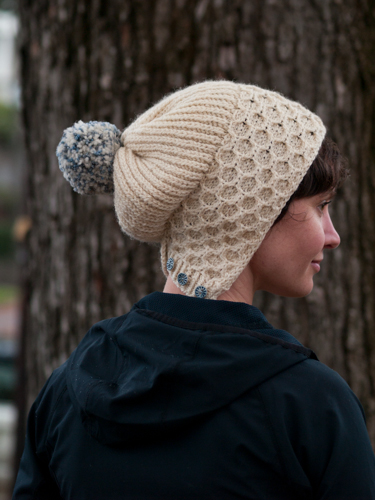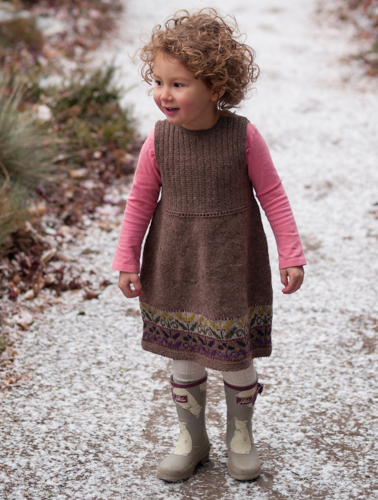My life seems to be orbiting an ever-growing cluster of babies and their needs at present. This is basically always true, given the two I’ve got at home (especially when they’re sick, as they are this evening, poor mites), but two very special new ones have joined our solar system in the last couple of weeks. One is a nephew by blood and the other is a nephew by knitting sisterhood. Each sweet fellow’s little project came off the needles the day he went home from the hospital; photographic evidence is shoddy. But this will keep Mateo warm this autumn:
The oft-knit Pebble vest by Nikol Lohr was a favorite for my own babies and I hope it will serve this new family as well as it did mine. I even got the buttons on the correct shoulder this time! This edition is knit from the delectable Swans Island Merino Alpaca, which has to be among the most luscious yarns I’ve ever handled. It’s like homemade bread still warm from the oven. I can’t tell you how it wears yet so I’m not ready to take the expensive plunge for a sweater for myself, but I’ve plenty left over to knit a swatch and beat it up. The color is Oatmeal and it looks good with absolutely everything.
Stephen, when he grows quite a bit larger, will be sporting this:
This one is my own design and I’m planning to grade it for larger sizes and send it around to testers later this summer. It’s a scholarly little raglan cardi (you’re looking at the back here) knit — uncharacteristically for me, but with good reason — in pieces and I’ll have more details to share soon, I hope.
Dear Stephen and Mateo, grow well. Nurse like champions, sleep like logs, charm the socks off your families. I love you, little scrumptious boys.
